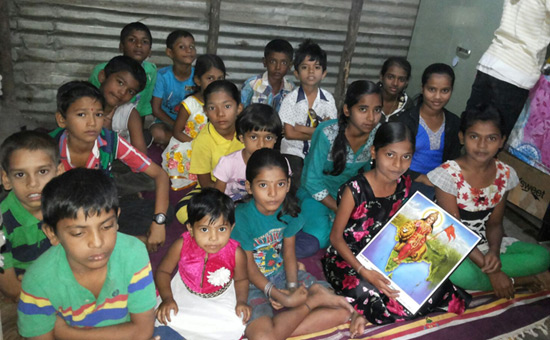- The transfer of unspent CSR money to Bank Accounts
is a bad move. We need a framework that marries national goals with CSR. Art
has 3 IDEAS to involve India Inc, People of India in co-achieving national
goals by creating an enabling framework.
The laws
governing corporate social responsibility (CSR) were introduced by the UPA-2
and became effective from April 2014 onwards. Every company with a net worth of
Rs 500 crore or revenues of Rs 1,000 crore or net profit of Rs 5 crore during
the immediately preceding financial year should spend 2% of their average net
profit in the last three years on activities like social development,
eradicating hunger, promoting education, empowering women, ensuring
environmental sustainability, conservation of national heritage, rural
development projects, etc.
According to a news report in the HBL (https://bit.ly/2kSq7xd), “CSR spends by companies have touched Rs 50,000 crore in the four financial fiscals to 2018, the unspent amount is higher at Rs 60,000 crore during the same period.” The reasons for not spending could be delay in identifying projects, lack of in-house expertise and intent.
So far, a company that did not spend the
CSR expenditure in a given year could carry this amount forward and spend it in
the next 12 months. According to Budget 2019, any unspent amount will have to
be deposited into an escrow account within 30 days of the end of that fiscal. This
amount will have to be spent within three years from the date of its transfer,
failing which it will be put into a fund as may be directed by the government.
A mandatory transfer of unspent CSR to an escrow account adversely affects cash
flows. When transferred to the government account, it assumes the form of tax.
Instead of using the stick, Modi 2.0 could get inspired by Mahatma Gandhi, who got the common man involved in India’s fight for freedom, and design a user-friendly framework for contributing such that CSR spends are integrated with national goals and also involve the people of India. Thus, CSR needs to be renamed as corporate national responsibility (CNR).
Here are some ideas.
One, create Bharat Suraksha Trust (BST) whose
objectives may include:
Setting up schools, health and vocational training centres all along India’s border with Chinese-occupied Tibet. The focus should be Ladakh, Uttarakhand and Arunachal Pradesh, especially border areas not accessible by road. The trust will also employ those who live in border villages. This should reduce migration—important because border residents are India’s first line of defence.
Making an ex gratia payment of, say, Rs 5
lakh to the family of every fauji who makes the supreme sacrifice, level Jawan
to Subedar Major. This would be in addition to what the Indian Army pays. The
army currently has an Army Welfare Fund Battle Casualties.
However, donors do not get tax deduction
and the process of donation/receipt is cumbersome. A similar site exists for
paramilitary forces under the ministry of home affairs.
Supporting existing schools run by the army
in border areas. This trust would allow the Indian Army to receive direct
financial support for these strategic and compassionate objectives. The BST would
essentially be run by retired armed forces personnel employed on contract. It
would have offices in major towns.
Two, create Bharat Pragati Trust (BPT). The
Chandrayaan-2 mission attracted unprecedented national attention. Can the
projects of national importance (say, five), in the fields of science and
technology, be identified? Projects that the common man can relate to and make
Indians proud. For example:
India must target to have 10 supercomputers
in the top-100, from two now. According to this ET report
(https://bit.ly/2kszJyM), India has two supercomputers in the top-100, both
used for weather forecasting and built at a cost of Rs 438.9 crore. Pratyush,
ranked 39, has a peak speed that is 45 times less than the top-ranked US-made
Summit.
Technology to reduce the use of costly chemical-based fertilisers and pesticides.
Deployment of Agni-V missiles having a
range of 5,000-plus km.
Artificial intelligence solutions.
Tejas Mark 1A (medium weight combat
fighter).
How will the above work?
India Inc, resident Indians and persons of
Indian origin can contribute for individual objectives and against the name of
the deceased fauji whose name shall appear on the site. The first under CNR and
others under Section 80(G) of the Income-tax Act.
The technology backbone of BST and BPT
websites, their running and online citizen interface should be outsourced to
the private sector, a bit like how the passport office is managed. Each site
would have project details and a framework for association.
Funds collected by both the trusts should
be used only for the purposes for which the money was raised. If people see
results, success or failure, money shall pour in. Conversely, if the government
used these funds elsewhere or for conspicuous consumption, the idea will become
a non-performing asset.
Trust and transparency are key. The government will have to provide updates, at a predetermined frequency, on the status of each mission-critical project
Actually, what
Indians need is a change in mindset. Sanjay Hegde, who took premature retirement at 55 from a Big Four firm to become director, Seva Sahayog Foundation, Mumbai, says, “Let us not expect governments to bring around every change. If corporate and civil society participate with full conviction and commitment, change in society will be enduring, deeper, faster, broader.”
Three, each
state should have a CNR website that lists projects India Inc could associate
with. NGOs who wish to associate can register, indicating areas of expertise.
Thus, an NGO database is available.
Every state
would have a CNR nodal officer who is the single-point interface for
corporates. The areas of focus could be drip irrigation, healthcare centres
under Ayushman Bharat Yojana, education and creation of forests, urban and
rural.
Here are
typical projects that could be funded by India Inc:
In Dantewada,
Bastar division, the Chhattisgarh government runs Chu Lo Aasman, a residential training school for girls and boys, from classes 9 to 12, who want to pursue professional courses. About 75% of students are adivasis. Besides contributing, India Inc employees can teach at these schools, a bit like Hindustan Lever management trainees (the author did) once did rural development work in the villages of Uttar Pradesh’s Etah district.
Reduce depletion of water levels and high cost of inputs. According to this Forbes India article (https://bit.ly/2lVhMZY), “CV Kumar of village Holalu in Karnataka’s Mandya district is happy since yield doubled to more than 80 tonnes per acre and input costs reduced significantly. Fertiliser requirement dropped 50% and water 40%. This is thanks to thousands of water of plastic pipelines that drip water and water-soluble fertilisers in a controlled and concentrated manner near the roots of his crops.”
 Drip irrigation in a farm near Bhuj in Kutch, Gujarat.
Drip irrigation in a farm near Bhuj in Kutch, Gujarat.
The Seva
Sahayog Foundation runs projects that are creating meaningful impact. Its Samutkarsha
inculcates interest in learning among children from slums and rural areas.
Science Education and Technology is run in rural and urban schools. Under this
project, a mini science centre is set up with different science
experiential learnings models. It provides school kits consisting of school bags,
books and accessories annually. The possibilities are enormous. The above ideas
will reduce government expenditure.
 Learning for children from weaker sections-Samutkarsha.
Learning for children from weaker sections-Samutkarsha.
Like we have best banker, fund manager of the
year awards, can the Indian Express Group organise CNR awards? Public
recognition of India Inc and NGOs boost morale and enhance brand equity.
The mandatory transfer of unspent CSR
amounts symbolises negative energy and will get lost in the Consolidated Fund
of India. Conversely, involve India Inc in co-achieving national goals by
creating an enabling framework.
India Inc must realise that its prosperity
is intertwined with the progress made by India and Bharat. Modi 2.0 must
realise that nationalism cannot be a substitute for sound economic and taxation
policies. Commitment to the poor is laudable, but it is India Inc that creates
jobs and profits.
Instead of trying to extract more revenues
from corporates, bring lawyers under GST. They are amongst the highest paid
service providers in India today.
Article was
first published in The Financial Express and here
Also see
pictures of
1. Education
City Geetham, Dantewada ie Chu le Aasman schools
2. Ramakrishna
Mission School Along, Arunachal Pradesh
3. Vivekanand
Kendra School Majuli, Assam
4. Chirag
Kumaon